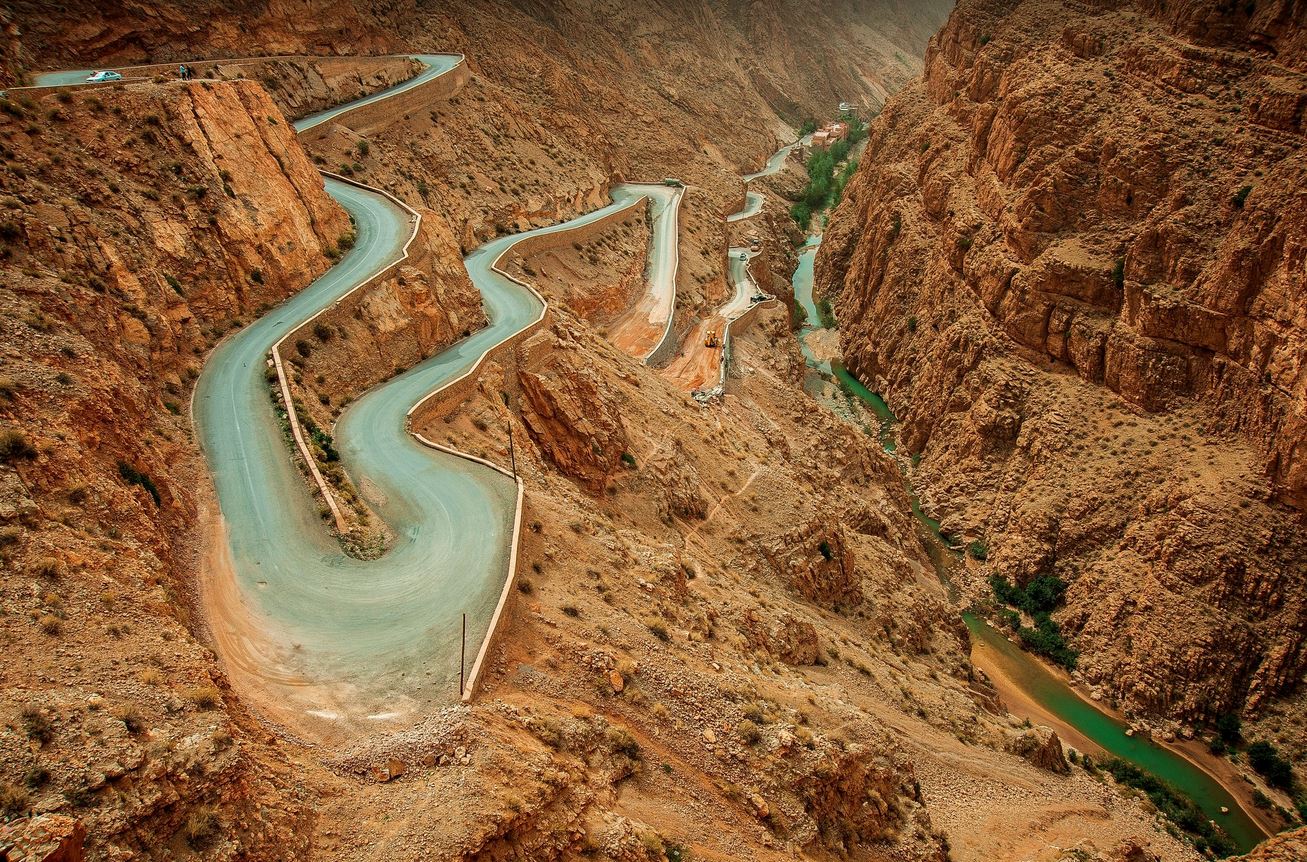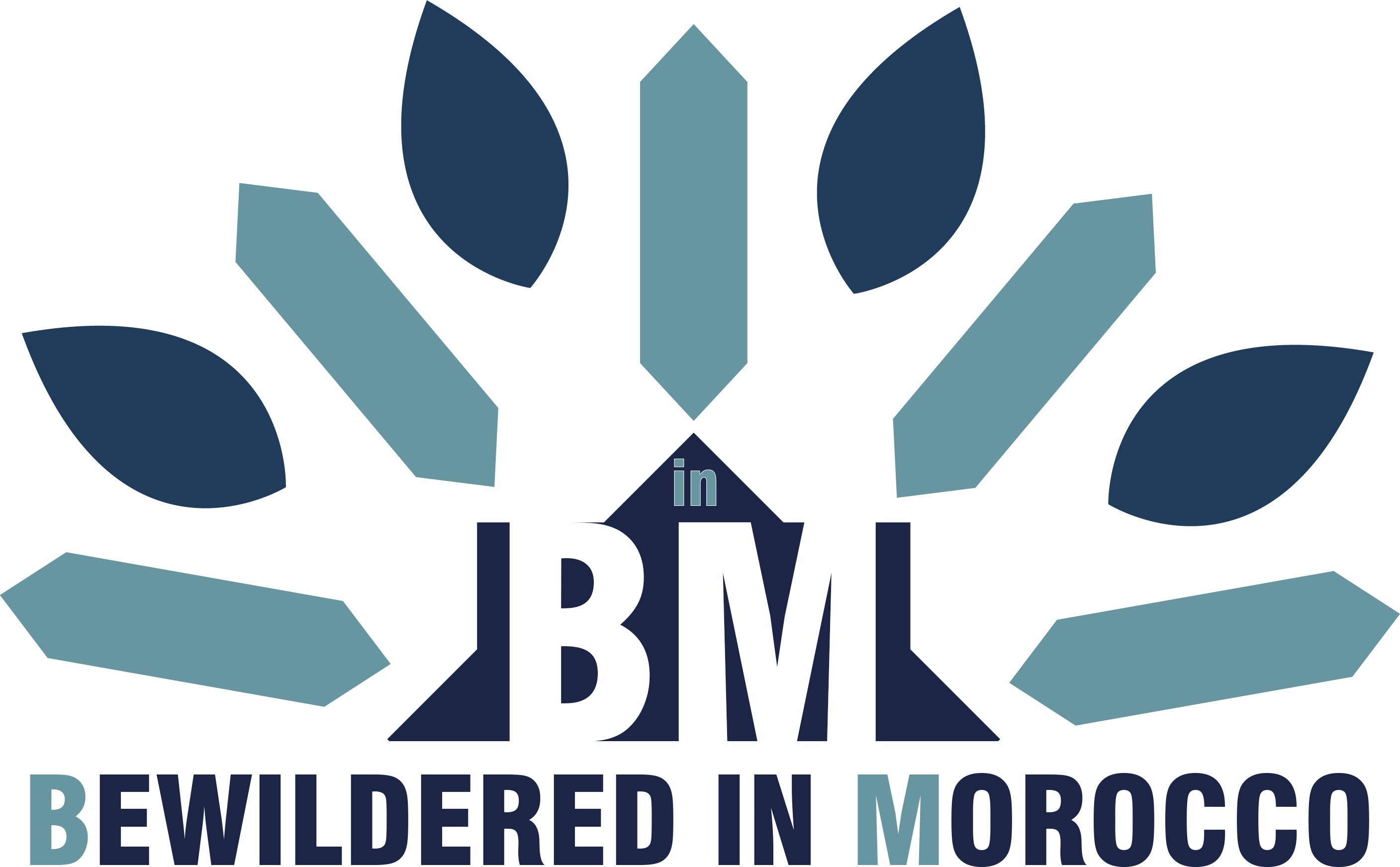The winding roads of Morocco's High Atlas and Dades Gorges offer some of the most breathtaking scenery in North Africa. After years of exploring Morocco's hidden corners, I can tell you that this mountain adventure will leave you speechless. From towering peaks to serpentine roads carved through red rock, this journey combines raw natural beauty with unforgettable human connections.
Understanding the High Atlas Mountains: Morocco's Natural Backbone
The Atlas Mountains stretch over 2,000 kilometers across Morocco, Algeria, and Tunisia, creating a natural barrier between the Mediterranean coast and the Sahara Desert. These ancient peaks are more than just scenic backdrops – they're the heartbeat of Berber culture and home to Morocco's most remote communities.
The highest peak reaches 4,000 meters above sea level, but don't worry about extreme altitudes during your road trip. Most travelers cruise comfortably between 2,100 to 2,800 meters, where the air is crisp and the views are endless.
The Cultural Significance of Mountain Life
What struck me most during my journey through the High Atlas and Dades Gorges was how these mountains shape daily life. Villages seem to melt into the landscape, built from the same red earth that surrounds them. You'll barely notice these settlements until you're right in front of them – a testament to centuries of harmonious living with nature.
The people here have adapted to mountain life in remarkable ways. During my travels, I learned from locals that climate change has dramatically affected their traditional farming. Apple, pear, and plum orchards once flourished in these valleys, but decreasing water levels have forced many families to abandon fruit cultivation, keeping just enough water for drinking.
Planning Your High Atlas and Dades Gorges Adventure

Best Time to Visit
October and November mark the high season for European overlanders exploring Morocco's mountains. Summer months offer a completely different experience – you'll have these spectacular roads almost entirely to yourself. The trade-off? Intense heat and limited tourist services, but also authentic encounters with locals who rarely see visitors during these months.
The Route: What to Expect
Your journey from Casablanca to the Dades Gorges covers approximately 9 hours of driving, but don't rush it. The initial stretch feels flat and industrial, but patience pays off. Once you enter the Atlas foothills, every kilometer becomes more spectacular.
Expect slow going on mountain roads – sometimes crawling at 20-25 km/h in second gear. Heavy trucks moving at 13-14 km/h can turn a simple journey into a full-day adventure. But trust me, the scenery makes every slow moment worthwhile.
Hidden Gems Along the High Atlas Route
Imilchil: Morocco's Most Remote Mountain Village
At 2,100 meters elevation, Imilchil surprises visitors with its bustling atmosphere. This remote settlement serves as a crucial rest stop for travelers crossing the Atlas. Despite its isolation, you'll find restaurants, small hotels, and unexpected energy from both locals and Moroccan travelers using the village as an overnight base.
The contrast between Imilchil's remoteness and its lively character perfectly captures the mountain experience – isolated yet connected, traditional yet adaptive.
The Healing Waters: Mountain Lakes and Local Legends
During my High Atlas and Dades Gorges exploration, I discovered mountain lakes with supposed healing properties. Local families living nearby these pristine waters welcomed me with traditional mint tea and shared stories about the lake's mystical qualities.
Unfortunately, like many water sources across Morocco, these lakes have lost significant volume since COVID-19, with former water lines now marking dry land where vehicles can park. Climate change's impact becomes starkly visible in these high-altitude ecosystems.
Navigating the Famous Dades Gorges
The Serpentine Road: Morocco's Mountain Challenge
The Dades Gorges culminate in Morocco's famous serpentine road – a winding marvel carved through red rock formations. Despite its reputation as one of Morocco's most dangerous roads, standard-sized vehicles navigate it without major difficulty. The key is patience and respect for the mountain terrain.
This dramatic finale showcases everything that makes the High Atlas and Dades Gorges special: stunning geological formations, engineering marvels, and landscapes that shift from green valleys to desert-like terrain within kilometers.
What Makes the Gorges Special
The Dades River carves through enormous red rock formations, creating a natural corridor between mountain walls. Along the route, you'll encounter:
- Wild river valleys with crystal-blue water
- Remote Berber villages unchanged for centuries
- Dramatic color changes from green valleys to red rock
- Steep hiking trails leading to rushing streams
- Traditional architecture blending seamlessly with natural surroundings
The Human Side: Hospitality in the High Atlas
Unexpected Invitations and Genuine Connections
Moroccan mountain hospitality creates the most memorable travel experiences. During my journey through the High Atlas and Dades Gorges, spontaneous invitations led to some of my most treasured moments.
Picture this: stopping for water and leaving with dinner invitations, homemade bread with almond paste (amlou), and a comfortable camping spot in someone's backyard. These encounters happen regularly in mountain communities where tourism hasn't commercialized local interactions.
Language Barriers and Universal Kindness
Communication challenges don't diminish the warmth of mountain encounters. Even without shared languages, tea ceremonies, hand gestures, and genuine smiles create meaningful connections. Arabic or Berber speakers have advantages, but don't let language barriers prevent you from accepting local invitations.
The traditional mint tea ceremony becomes a universal language. Watching locals prepare tea – touching burning hot glasses with bare hands, mixing multiple pours for perfect sweetness – offers cultural insights no guidebook can provide.
Practical Information for High Atlas Travelers
Transportation and Vehicle Requirements
Mountain roads demand reliable vehicles and patient driving. Steep inclines, narrow passages, and altitude changes challenge both drivers and engines. Mechanical preparation is essential – compressor failures and electrical issues become serious problems in remote areas where repair shops are scarce.
Budget extra time for:
- Mechanical stops and roadside assistance
- Photo opportunities at scenic viewpoints
- Spontaneous local encounters
- Weather-related delays
Essential Supplies and Services
Mountain communities offer basic services but limited variety. Stock up on:
- Fresh water (refill opportunities exist but aren't guaranteed)
- Basic tools and spare parts for vehicle maintenance
- Warm clothing for altitude changes
- Cash for small purchases and tips
Roadside coffee vendors appear in unexpected locations, serving excellent local coffee for around 60 cents. These mobile businesses provide welcome breaks during challenging mountain stretches.
Cultural Etiquette in Mountain Villages
Respect for local customs enhances your High Atlas and Dades Gorges experience:
- Accept hospitality graciously but understand reciprocity expectations
- Photograph people only with permission
- Dress modestly, especially in traditional villages
- Learn basic Arabic greetings – "Salam" opens many doors
- Show interest in local crafts and traditions
Beyond the Main Route: Side Adventures
Rose Valley: Seasonal Beauty
The Rose Valley, accessible from the Dades region, showcases Morocco's famous rose cultivation. While roses bloom seasonally, the valley's agricultural patterns and traditional farming methods provide insights into mountain agriculture year-round.
Meeting Fellow Travelers
Mountain roads create unique opportunities for traveler connections. Hitchhikers, overlanders, and local guides often share routes, creating impromptu travel communities. These encounters add richness to solo journeys and provide safety nets in remote areas.
Conclusion: Your High Atlas Adventure Awaits
The High Atlas and Dades Gorges represent Morocco at its most authentic – where ancient traditions meet stunning natural beauty, and where every turn in the road brings new discoveries. This journey challenges comfortable travel assumptions while rewarding adventurous spirits with experiences money can't buy.
From the industrial outskirts of Casablanca to the serpentine mountain roads carved through red rock, this route offers transformation through travel. You'll leave with more than photographs – you'll carry stories of unexpected kindness, lessons in resilience, and appreciation for Morocco's incredible diversity.
Ready to explore Morocco's mountain majesty? Share your High Atlas travel plans in the comments below! Have you driven Morocco's challenging mountain roads, or are you planning your first Atlas adventure? I'd love to hear about your experiences and help answer any questions about navigating this incredible region.
What aspects of High Atlas travel interest you most – the scenic drives, cultural encounters, or perhaps the challenge of remote mountain exploration? Let's start a conversation about Morocco's most spectacular mountain journey!
